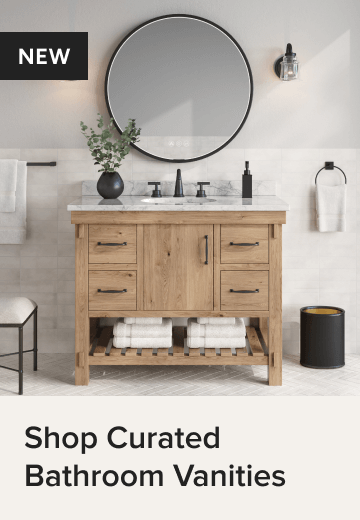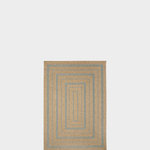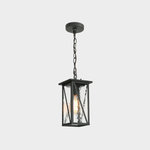Porch of the Week: Perched Like a Nest in the Vermont Mountains
A designer gleans inspiration from Adirondack and modern architecture, keeping Green Mountain views in mind
The beautiful views of the Green Mountains and surrounding forest were the driving factor in siting this Waterbury, Vermont, screened-in porch. Designer Milford Cushman carefully considered the experience of enjoying the views in the open air while feeling protected by the architecture when he perched the porch 11 feet above the steep slope below. He also nodded to the architectural style of the Great Camps in the Adirondacks by exposing the timber structure and highlighting the beauty of Douglas fir in the modern, nest-like space.
The design of the great room informed the design of the porch, seen here through the opening on the left. “The structural trusses in here are eastern white pine pickled with a light wash, and the ceiling boards are wood painted white,” Cushman says. “We used Douglas fir on the timber structure, screen panels and ceiling board on the porch to pick up on the wood in the great room.”
When designing the porch, Cushman kept three important questions in mind:
The exposed structure of the porch is a nod to Adirondack architecture, a rustic style marked by rugged local materials and made famous by the sprawling lakeside compounds of the Adirondack Mountains. “To me, that was the first truly American architectural style. Exposing elements like the rafter tails brought the architecture of the room itself out beyond the skin of the building, like they did in the Great Camps,” Cushman says. “The house is a mix of gabled and shed roofs, and I used the shed roofs to celebrate the timber structuring of those Adirondack Great Camps.”
Find a local landscape designer
- “How do we respond to the space around us?”
- “Do we feel protected?”
- “Can we observe our surroundings?”
The exposed structure of the porch is a nod to Adirondack architecture, a rustic style marked by rugged local materials and made famous by the sprawling lakeside compounds of the Adirondack Mountains. “To me, that was the first truly American architectural style. Exposing elements like the rafter tails brought the architecture of the room itself out beyond the skin of the building, like they did in the Great Camps,” Cushman says. “The house is a mix of gabled and shed roofs, and I used the shed roofs to celebrate the timber structuring of those Adirondack Great Camps.”
Find a local landscape designer
The porch is 11 feet off the ground, and its shed roof slopes up toward the western mountain views. The other two screened sides provide views of the surrounding forest.
“I designed the porch to feel like a nest, with prospect-refuge in mind. The porch offers my clients and their guests an open-air space but the refuge of being covered by the roof and having a solid wall,” Cushman says. “And what is a nest if not a place to prospect, like a bird looks out to protect the nest? Here, the prospect was the many opportunities for view.”
To keep the views open while meeting safety codes, the designer used a strategy he came up with some years back. Per Vermont’s residential codes, the railings needed to be 36 inches high. Rather than cluttering the modern space with vertical wood rails or distracting with horizontal cable rails, he used hardware cloth for safety. Hardware cloth is a very strong metal grid product often used in agricultural designs. “The screening is not an impediment between the porch and the views,” he says.
“The insect screening is a very high-quality nylon cloth from Phifer that is really, really durable,” Cushman says. “Below the cross rail, I used a 1-by-1-inch hardware cloth.” The result is that the safety railing has a minimal effect on the view from the porch. And because the hardware cloth is installed in front of the nylon insect screening, it can stand up to pets and toddlers.
Cushman used hardwood decking for the flooring. Green pendant lights from Vermont company Hubbardton Forge hang overhead. “We used the same pendants in a smaller size and a different finish over the kitchen island,” Cushman says.
Browse outdoor lounge furniture in the Houzz Shop
“I designed the porch to feel like a nest, with prospect-refuge in mind. The porch offers my clients and their guests an open-air space but the refuge of being covered by the roof and having a solid wall,” Cushman says. “And what is a nest if not a place to prospect, like a bird looks out to protect the nest? Here, the prospect was the many opportunities for view.”
To keep the views open while meeting safety codes, the designer used a strategy he came up with some years back. Per Vermont’s residential codes, the railings needed to be 36 inches high. Rather than cluttering the modern space with vertical wood rails or distracting with horizontal cable rails, he used hardware cloth for safety. Hardware cloth is a very strong metal grid product often used in agricultural designs. “The screening is not an impediment between the porch and the views,” he says.
“The insect screening is a very high-quality nylon cloth from Phifer that is really, really durable,” Cushman says. “Below the cross rail, I used a 1-by-1-inch hardware cloth.” The result is that the safety railing has a minimal effect on the view from the porch. And because the hardware cloth is installed in front of the nylon insect screening, it can stand up to pets and toddlers.
Cushman used hardwood decking for the flooring. Green pendant lights from Vermont company Hubbardton Forge hang overhead. “We used the same pendants in a smaller size and a different finish over the kitchen island,” Cushman says.
Browse outdoor lounge furniture in the Houzz Shop
This photo shows how the screened-in porch stands out from the main house while also complementing it.
Check out our beginner’s guide to get started on your home project
Check out our beginner’s guide to get started on your home project
Ian Ambler designed and built the landscape. The lone ash is an important feature, while large boulders connect the property to the granite mountains. “Ian designed the majority of the plantings to be low-maintenance with year-round color and texture,” Cushman says. The landscape has an informal look that fits in well with the surroundings.
The wife enjoys vegetable gardening, so a fenced-in vegetable garden is located beneath the porch. The gridded fence around it nods to the hardware cloth used on the screened-in porch.
The wife enjoys vegetable gardening, so a fenced-in vegetable garden is located beneath the porch. The gridded fence around it nods to the hardware cloth used on the screened-in porch.
“We wanted to create easy access to the backyard from the porch, so we placed a staircase here,” Cushman says. The stairs have wood treads and handrails, and cable wire railings. These railings repeat an element used on other decks off the back of the house and on a bridge and porch at the main entry. The shed roof has deep overhangs, and the one on this side protects the staircase from any water and snow coming off the roof.
The porch is now a favorite spot for viewing the mountains and spectacular sunsets. The homeowners feel safely perched in their nest.
More on Houzz
Browse thousands of porch photos
Read more stories about porches
Hire a local general contractor
Shop for your porch
The porch is now a favorite spot for viewing the mountains and spectacular sunsets. The homeowners feel safely perched in their nest.
More on Houzz
Browse thousands of porch photos
Read more stories about porches
Hire a local general contractor
Shop for your porch
















Porch at a Glance
Who lives here: A couple whose children have left the nest
Location: Waterbury, Vermont
Size: 384 square feet (36 square meters); 16 by 24 feet
Designers: Milford Cushman (architectural design) and Terri Gregory (interior design) of Cushman Design Group; Ian Ambler (landscape design) of Ambler Design
Builder: John Steel (now retired)
The setting of the new home is a clearing surrounded by woods. Cushman sited the house to maximize the views of the Green Mountains to the west. The screened-in porch is on the south side of the house, seen here on the left. The home looks out to Camel’s Hump, the third-highest mountain in Vermont. No other neighboring homes can be seen from the house. Cushman also planned the location around an existing ash tree in the field, seen in the center of the backyard here. The homeowners named the property Lone Ash after this tree.
The owners are a couple who were relocating from Washington, D.C. “They wanted main-floor living, so the great room, kitchen, mudroom, her studio and their bedroom are all on the main level. Because the house is on a steep slope, we went down instead of up,” Cushman says. The lower level includes a workout space, the husband’s office and bedroom suites for the couple’s adult children when they visit. “We try to design all our projects for aging in place, whether the homeowners need it or not,” the designer says. Whether it’s the couple’s forever home or new owners use the accessible features, making a house suitable for the challenges that can come with aging is a practical and sustainable choice.
“The wife is an artist who has a very active creative streak — she’s a quilter and a photographer,” Cushman says. The project was a collaboration between her, Cushman as the architectural designer and project manager, and Terri Gregory as the interior designer.
Find a local architect on Houzz